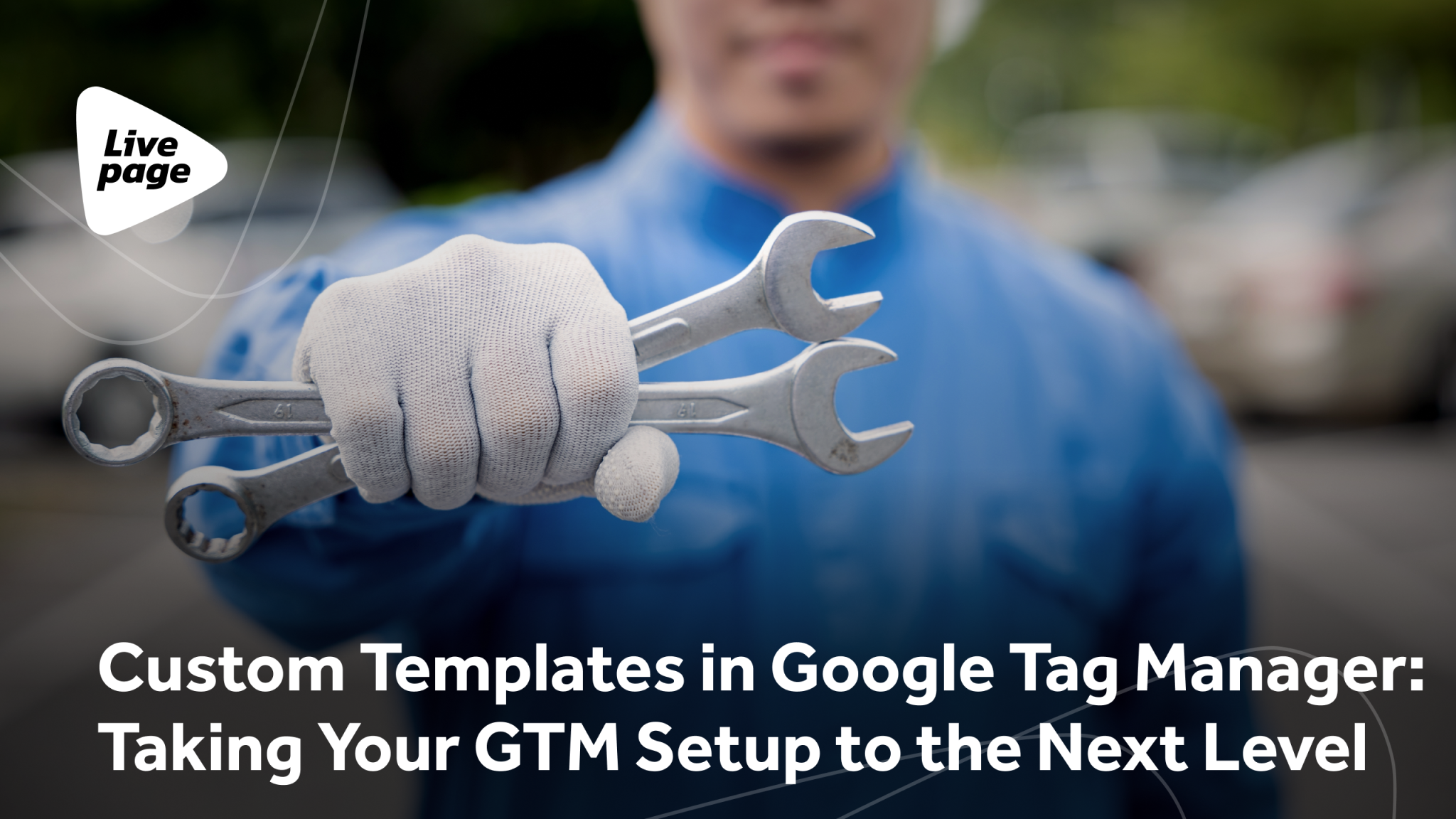
How to Build a Local SEO Content Strategy: 7 Actionable Steps for Success

Local visibility starts with smart content. In this guide, we’ll reveal simple, actionable steps to build a strong content strategy for local SEO that will help your business stand out and get found by nearby customers.
What Is a Local SEO Content Strategy?
It’s a structured plan for creating and optimizing content that helps your business appear in local search results when potential customers nearby are searching for products or services you offer. Unlike a general SEO content strategy targeting broad online visibility, local SEO focuses on location-specific keywords, customer intent, and geographic relevance to help your business stand out in your community and surrounding areas. To be more specific, when people search for services “near me” or include geographic terms like “dentist in Brooklyn” or “best pizza in Austin,” a local SEO content strategy ensures your business shows up in those moments.
A well-executed strategy for local business content marketing not simply boosts search rankings; it brings in real, high-intent traffic from people who are ready to act. Whether you are a plumber, a cafe, or a multi-location legal firm, this approach will let you:
- Build local trust and authority.
- Drive more foot traffic and inquiries.
- Convert local visitors into loyal customers.
- Stay competitive in your area.
In a word, if your goal is to grow your business within your community, a strong local SEO content strategy is a must.
7 Steps to Build Your Local SEO Content Strategy
At its core, a local SEO content strategy combines the principles of content marketing (creating helpful, relevant, and valuable content) with local optimization techniques that signal to search engines like Google that your business is tied to a specific area.
Yet, it’s not just about mentioning the name of your city or neighborhood across your content pieces. It’s more about creating a holistic content ecosystem that meets the needs of local customers throughout their journey, from discovery to decision-making. So, here are the steps to build powerful content marketing strategies for local SEO that will drive traffic, build trust, and increase conversions.
Step 1: Know Your Audience
Who are you trying to reach? That’s the question to answer to approach your content strategy from the right angle. The better you understand your audience, the better you can tailor content to their needs and ensure relevance in local search results. Consider what locals search for, how they speak, and what matters most to them.
- Identify key demographics: Determine their age group, social and marital status, income level, lifestyle, and location to shape the tone, format, and content topics that will resonate with them.
- Understand their search intent: You should embrace intentional (top-rated chiropractors near me), navigational (Starbucks in Austin), and transactional (buy patio furniture in Denver) intents, depending on the funnel stage your audience is in.
- Explore local behavior and pain points: What challenges does your local audience face? What seasonal trends or regional quirks influence their decisions? Talk to your customers, check reviews, read local Facebook group discussions, and mine customer service inquiries to find recurring concerns.
To get direct insights and real-world data you can rely on, use data tools like Google Analytics, Google Search Console, and local Facebook groups.
Step 2: Analyze Your Competitors
You can learn a great deal from your competitors who already rank well in your area. Note that your true SEO competitors aren’t always the businesses you consider your biggest rivals offline; they’re the ones who show up in Google’s local search results when your target customers type in relevant queries.
So, look at the top 3–10 results in both Google’s organic listings and the Local Pack. Then, examine their blogs, service pages, Google Business Profile posts, and backlink profiles. Identify content gaps, types of content that perform well, and which keywords drive their traffic. When analyzing competitor insights, try to do one of the three things to stay ahead of the curve and outrank them:
- Do it better;
- Do it differently;
- Do something they missed entirely.
Step 3: Choose Your Subject
At this point, you should define the core subject of your local SEO content strategy. It’s the thematic foundation that ties everything together and connects your products or services to your local audience. It reflects:
- What your business offers.
- What your target audience is searching for.
- What sets you apart locally.
For example, a dentist in Louisville might focus on family dentistry, emergency services, or cosmetic procedures tailored to locals. Think of it as your SEO theme that becomes your strategic anchor. All your content should ladder up to this main subject for consistent branding and SEO relevance. It matters a lot since Google favors topical authority, meaning the more relevant content you produce around a specific topic, the more likely your site will rank higher in local results.
Step 4: Select Topics for Articles
Once you’ve made up your mind about the core subject for your local content marketing strategy, it’s time to break that subject into high-impact, locally relevant article topics. This is where your strategy starts to take shape through content that answers questions, solves problems, and targets the exact searches your local audience is typing into Google. Well-selected topics are the bridge between what your customers want to know and what your business wants to rank for, turning casual browsers into loyal customers.
To build your content about the right topics that will contribute to your SEO performance:
- Consider your customers’ questions and pain points by analyzing their inquiries, sales team notes, FAQ pages, Google reviews, and community forums.
- Think about seasonal needs and local trends and how they align with your business to reflect them in your content.
- Cover each stage of the customer journey to meet your potential client’s needs at different levels of awareness and nurture them toward action.
- Mix evergreen topics and timely content to consistently pop up in search results.
- Group related articles around a central service or location to create a topic cluster and help Google understand your site’s structure and topical relevance.
Step 5: Conduct Keyword Research
Keyword research is the engine behind any successful local SEO content strategy, ensuring that your content is not only relevant but also searchable, targeted, and aligned with how real people in your area search online to further drive qualified traffic straight from Google to your website and into your business.
To choose keywords that will prove efficient for your local content strategy:
- Use keyword research tools like Ahrefs, SEMrush, Google Trends, and Google Keyword Planner to search for keywords that match your main product or service while generating more keyword ideas, checking monthly search volumes, and identifying competition levels. Pinpoint phrases with local modifiers, long-tail keywords, and “near me” search combinations.
- Study Google Autocomplete suggestions, People Also Ask boxes, and related searches at the bottom of the page for real queries on your main service keywords to spot keyword variations.
- Use tools like SEMrush, Ahrefs, or SpyFu to figure out which keywords your competitors rank for, especially local and long-tail terms, and identify the keyword gaps you can benefit from.
In the end, you want keywords that will convert, not just bring visitors. So, don’t go for keywords just because they have a high search volume. Focus on those with clear commercial intent, local specificity, and relevance to your business.
Besides, if you have a new website without any expertise and trust from the search engines, we do not recommend choosing highly competitive keywords. You can check the keyword difficulty via Ahrefs in the Keywords Explorer section. It’s a metric that shows how difficult it is to rank a page at the top for a particular keyword phrase. Thus, keywords with a difficulty score of up to 30 are the easiest to promote, 31 to 70 are hard to promote, and 71 to 100 are super hard to promote.
For example, you want to write an article about the Mediterranean diet. Although driving a lot of traffic, this keyword has high competition, with a difficulty score of 86.

Instead, we can use the Matching Terms section of Ahrefs and find a less frequent and complex keyword there. For example, the “pros and cons of the Mediterranean diet” keyword has a keyword difficulty of 12.
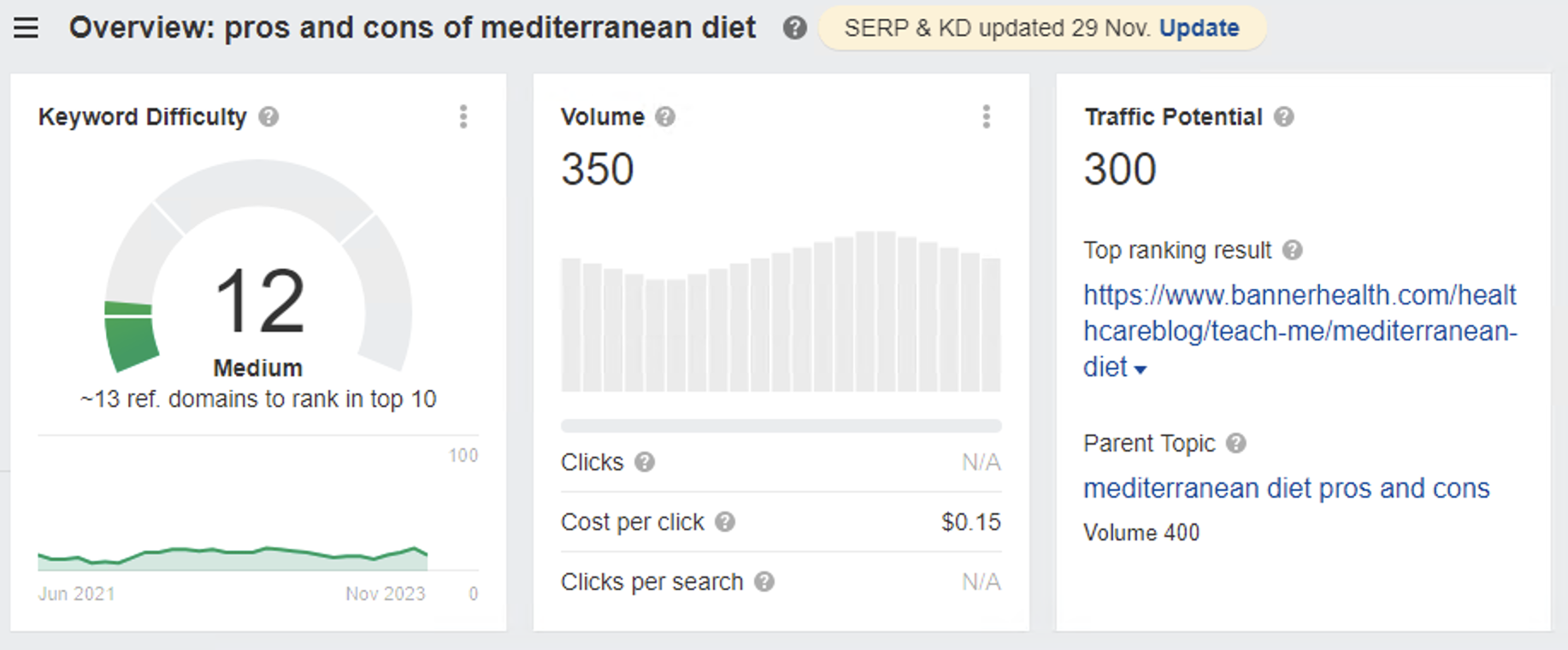
Step 6: Optimize Your Google Business Profile (GBP)
GBP is one of the most powerful tools in your local SEO arsenal. It’s often the first impression potential customers get of your business since they come across it in Google Search and Maps results. It’s your digital storefront in Google’s ecosystem. When fully optimized, it can help your business rank higher in local search, capture more qualified leads, and build trust before customers even click through to your site.
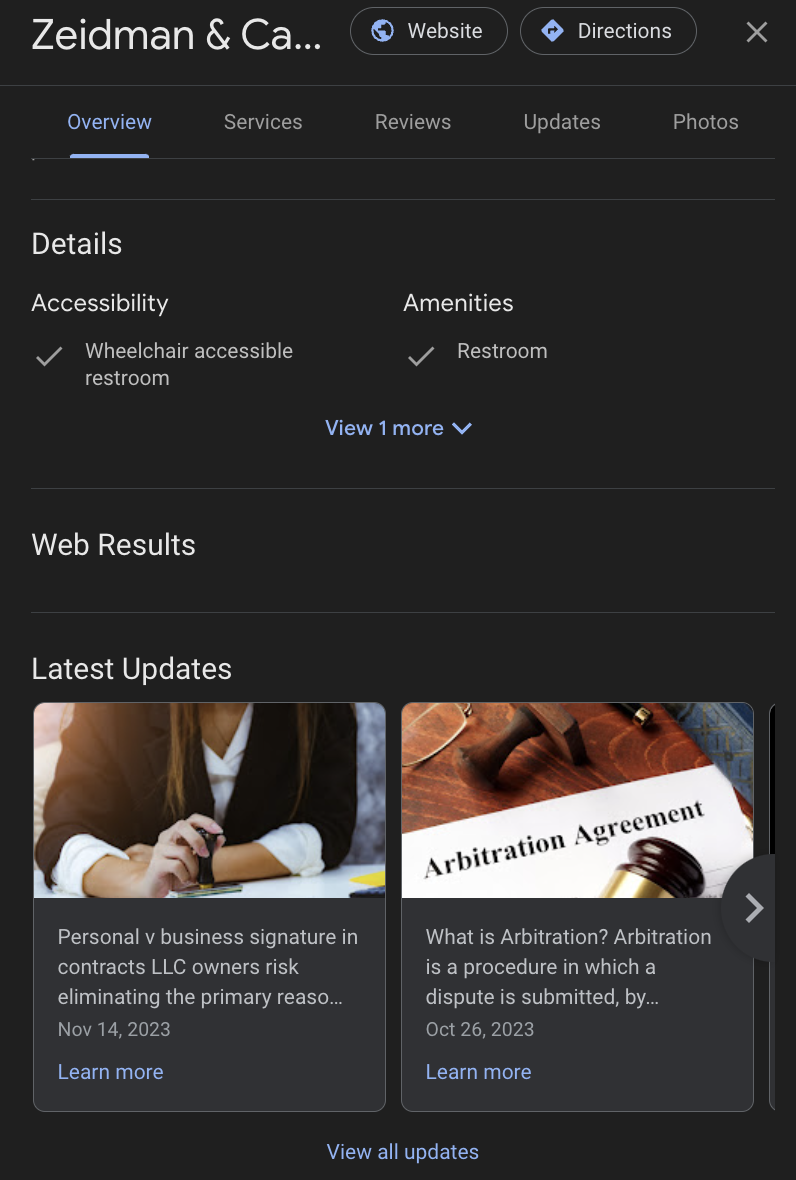
Therefore, to complement and strengthen your content strategy, make sure your GBP is fully optimized:
- Ensure your business name, address, and phone number (NAP) are consistent across the web.
- Add high-quality photos and descriptions.
- Choose the right business categories.
- Post updates and respond to reviews regularly.
Step 7: Create Your Content Plan
Now that you’ve gathered all the essential pieces of the strategy on content marketing for local businesses, it’s time to put them together into a structured plan that will transform your ideas and insights into a clear, organized, and executable roadmap that drives the desired results.
To ensure that your content is intentional, consistent, duly optimized, and aligned with your business goals, a solid content plan should include:
- Content type and format.
- Topic and target keyword, as well as keyword difficulty and volume.
- Target audience segment.
- Publishing date. We recommend writing at least 3–5 articles per month on average, depending on your niche and resources.
- Roles and deadlines.
- Promotion channels (email, social, GBP, etc.).
Best Practices to Improve Your Local SEO Content
When it comes to dominating local search results, creating content is just the beginning. To truly succeed in local SEO, you should fine-tune your content to speak directly to your community and generate real-world results. Here are a few top tactics to make your local SEO content stand out and promote your content strategy.
Incorporate Local Keywords Naturally and Strategically
Using location-specific keywords throughout your content ensures that Google understands exactly where your business is relevant. When you’ve made up a list of keywords, map them smartly to your content:
- Service pages: Target high-value commercial terms like “kitchen remodeling San Francisco.”
- Blog posts: Focus on informational and long-tail queries, such as “how to choose a kitchen contractor in San Francisco.”
- Landing pages: Use for hyperlocal or campaign-based targeting.
- Google Business Profile: Use top keywords in your business description, posts, and services list.
At the same time, remember that keyword stuffing or awkward phrasing can hurt readability and SEO performance. To avoid this:
- Integrate local keywords organically into page titles, headers, meta descriptions, image alt tags, and body text.
- Use keyword variations. For example, “Boston plumber,” “plumbing services in Boston,” “best plumber near Fenway.”
- Include neighborhood names, landmarks, and local slang your audience tends to use.
- Don’t repeat the same keyword too many times. Prioritize natural flow. Normally, keyword density shouldn’t exceed 1–2%.
Create Helpful Localized Content
Localized content helps demonstrate community involvement and makes your business feel approachable and authentic. To win your local audience, create content tailored to their needs and the challenges they face in your region.
- Write how-to guides, tips, checklists, and FAQs that answer common local questions and address local pain points.
- Share customer stories, testimonials, or case studies from local clients to build trust.
- Develop geo-specific landing pages for each area you serve with unique content.
- Offer content assets that align with local events, trends, seasons, or challenges.
Tip: Use internal links between your local articles and service pages to boost relevance and keep users on your site longer.
Publish on Local Websites and Directories
Getting your content featured on reputable local sites, directories, and news platforms not only expands your visibility but also gives you an opportunity to earn valuable local backlinks, which are strong ranking signals.
- List your business on trusted local directories (Yelp, TripAdvisor, BBB, Yellow Pages, etc.). This will also help form brand awareness and trust through positive customer reviews.
- Submit press releases or guest articles to local news sites or blogs.
- Join chambers of commerce, business associations, or neighborhood groups with digital directories.
- Encourage local bloggers or influencers to mention your brand, products, or services.
Link insertion service is another type of link building that works well for SEO for a local business. Link insertion involves getting a link from an article that has already been written and posted on another resource.
Leverage Your GBP for Sharing Your Company News and Updates
Your GBP is a powerful local content platform you may be underutilizing. To maximize your GBP profile for local content marketing:
- Use the “Posts” feature to share company updates, promotions, events, blog links, or FAQs.
- Include local keywords and calls to action.
- Share community involvement, such as charity events or local partnerships.
- Post regularly to stay active and relevant in Google’s algorithm.
For example, one of the bakeries in New York City adds special offers for its clients in this section:
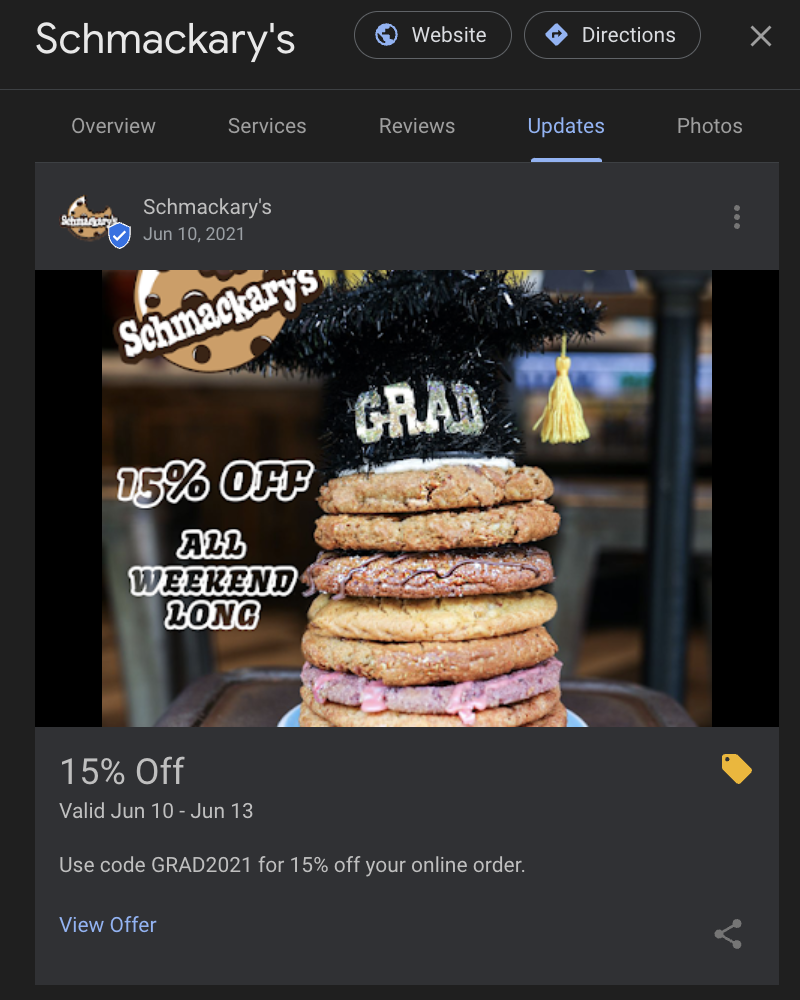
And here’s how a famous concert hall in New York City decided to publish a discounted Black Friday ticket offer on its profile:
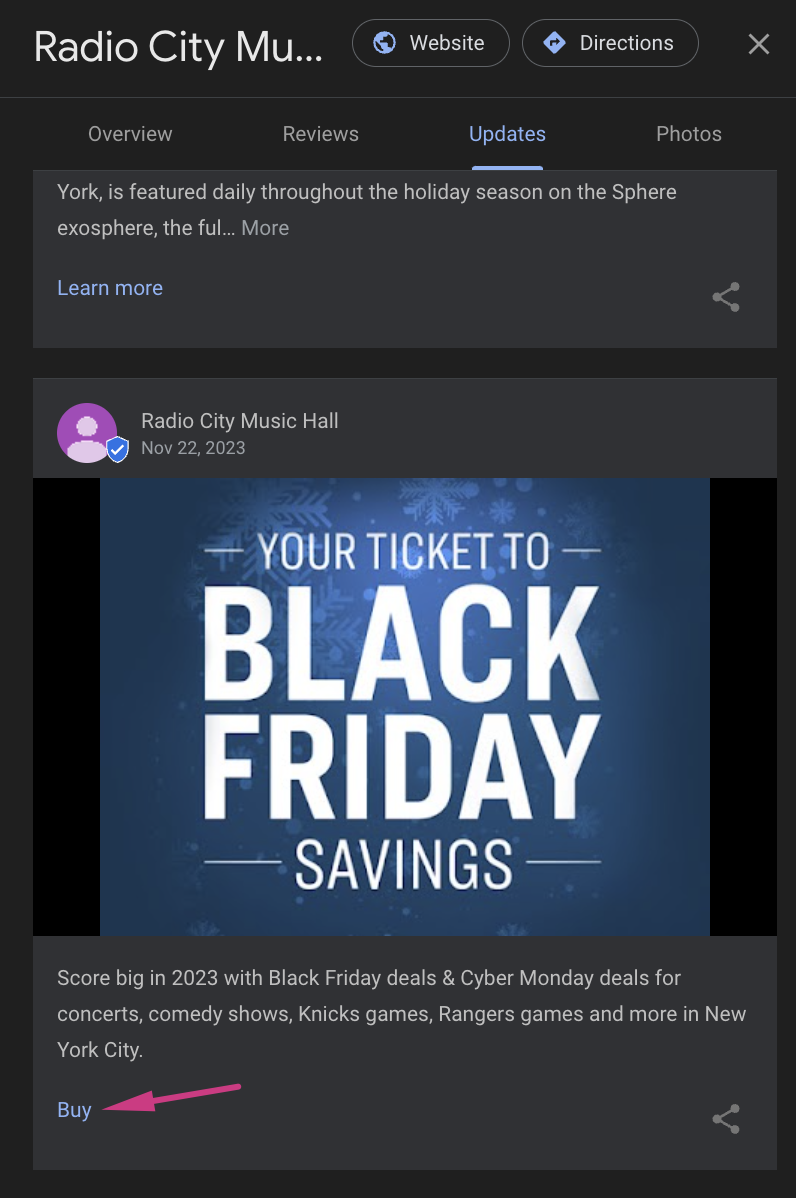
By clicking on the button, clients are automatically redirected to the website page where they can purchase the tickets they are interested in.
Tip: Reuse snippets of your blog articles in GBP posts with a link back to the full content on your site to drive both SEO and traffic.
Optimize for Voice Search
Most local queries today are spoken into smartphones and smart assistants. So, voice search has become a vital tool for local SEO. Voice queries are more conversational and question-based, and optimizing for them is a must.
- Use natural language in your content to match how people speak (e.g., “Where can I get vegan tacos near me?”).
- Include FAQs and short, direct answers on your website.
- Use schema markup to help search engines understand your content’s context and structure.
Conclusion
Building a strong local SEO content strategy takes more than just creating blog posts or listing your business online; it requires a well-structured approach. So, whether you go for in-house SEO or hire an on-page and off-page optimization agency, knowing the steps and best practices for creating a strong local SEO content strategy will help you position your business as a trusted local authority, maximize your success, and stay ahead of the competition.
If you don’t want to dive into all the nuances yourself, we at content marketing services agency Livepage can guide you every step of the way. Contact us to build the local content strategy that works.





